Saint Andrew the Apostle
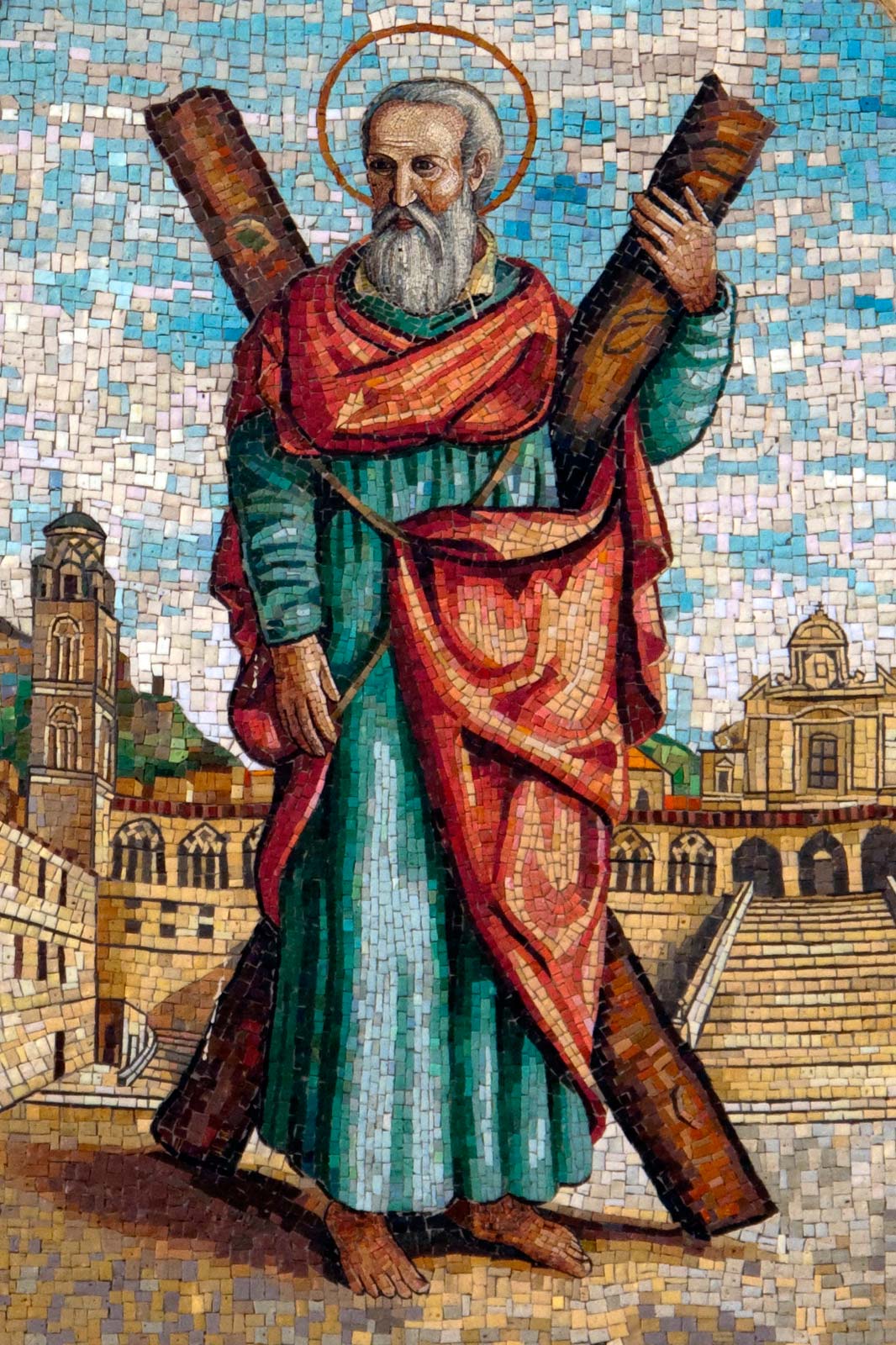
Saint Andrew the Apostle (Greek: Ἀνδρέᾱς) is honored by the Byzantine church in the Orthodox tradition with the name Protokletos (Πρωτόκλητος) because he was the First-Called Disciple of Jesus Christ.
Saint Andrew the Apostle began as a Disciple of Saint John the Baptist, a key figure of the Bible and revered in Christianity for Baptizing Jesus Christ.
His name "Andrew," like other Greek names was common among the Jews and other people who were influenced by Alexander the Great's legacy to "Hellenize" the world through Greek culture and language.
The Apostles names were Hellenized and Greek names were also given to children throughout Judea and the Diaspora (e.g. Andrew, Peter, Paul, Thomas, Simon Philip, Alexander, Jason).
Early Christianity spread through the Jewish communities in the last years of the first century BC and in the first years of the first century AD.
The New Testament was written in Greek, the Old Testament was also translated from Hebrew into Greek and Greek was used to preach the Gospel of Christ throughout the eastern half of the predominantly Greek-speaking Roman Empire.
Early Life
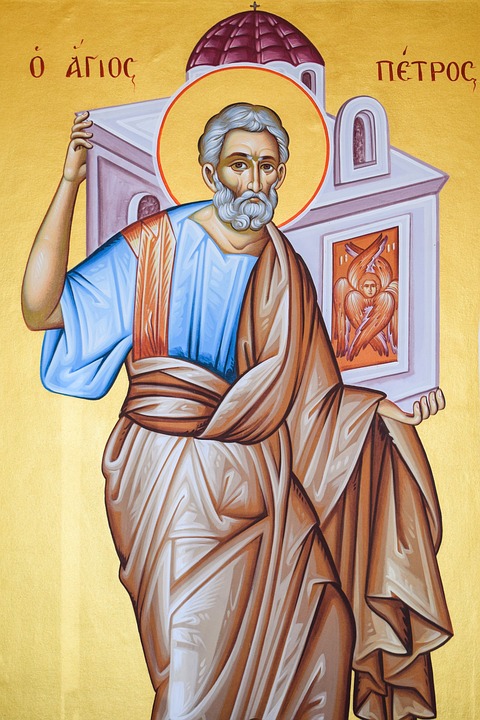
Saint Andrew the Apostle
Bethsaida was the hometown of the Apostles Andrew, Peter and Philip.
Andrew, the son of Jonah, was born between 5 AD and 10 AD in the fishing port town of Bethsaida by the sea of Galilee and was a fisherman before he and his brother Simon (Peter) became two of the 12 disciples of Jesus - hence the tradition that Jesus called His Disciples to make them "fishers of men" (Greek: ἁλιεῖς ἀνθρώπων).
It was John the Baptist who pointed Andrew to Jesus saying, "Behold the Lamb of God."
John the Baptist and Jesus Christ were cousins.
The two brothers, Andrew and Peter, became Disciples and went through life leading people to Jesus Christ before and after the Crucifixion.
Miracles of Jesus Christ
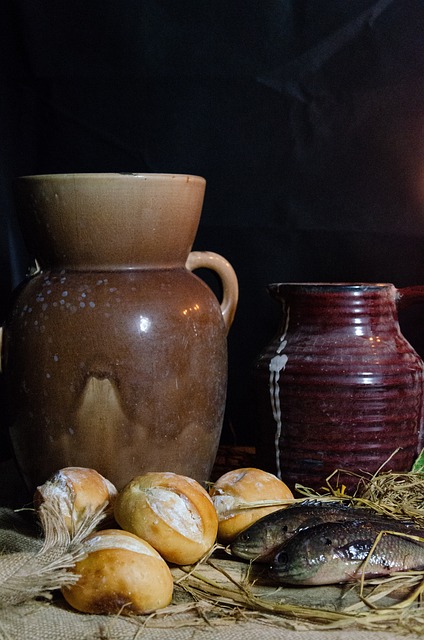
Saint Andrew the Apostle
Jesus gave a blind man’s gift of "spiritual sight" and accompanied by his healing of physical sight just outside Bethsaida.
-Gospel of Mark (Mark 8:22–26)
All four Gospels record Jesus miraculously feeding five thousand people with two fish and five loaves near Bethsaida, highlighting the importance of sharing and placing our trust in God.
The miracle of Jesus Christ walking across the Sea of Galilee near the town of Bethsaida and recorded in three of the Gospels (Matthew 14:22–36; Mark 6:45–56; John 6:16–21) convinced His Disciples that He was indeed the Son of God (Matthew 14:32–33).
It happened soon after His miraculous feeding of the 5,000 with only five loaves of bread and two fish.
Disciples of Jesus Christ
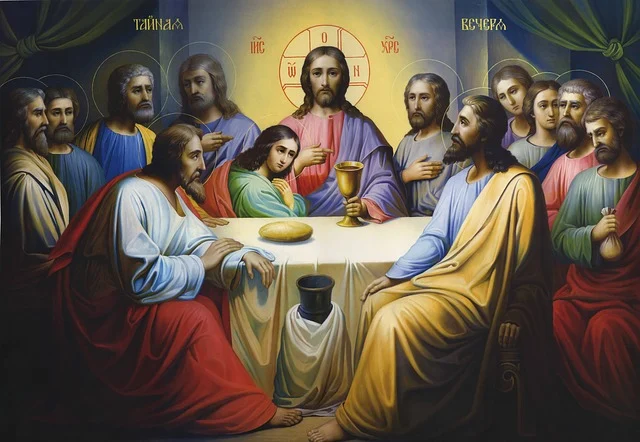
Saint Andrew the Apostle
Jesus Christ chose Twelve Disciples to represent the twelve tribes of Israel in Jewish scriptures from the beginning of His Baptism by John the Baptist in the River Jordan to be witnesses to His Life, Teachings, Miracles, and finally His Death, Resurrection and Ascension which ended His Ministry on earth in Jerusalem.
The Twelve Disciples who followed Jesus Christ during His three year Ministry became the first believers who exercised faith (Acts 2:38).
Through faith, they became the first primary teachers of Jesus Christ's Gospel Message.
Jesus also appointed a further 70 Disciples (εβδομήκοντα - 72 Disciples in the Eastern Christian tradition) and sent them out in pairs with priesthood authority to preach the Gospel, heal the sick and to win souls for God, ("The kingdom of God has come near to you)."
Before Jesus ascended to Heaven, he gave His last earthly command (the Great Commission) to His Disciples, forty days after His Resurrection on the Mount of Olives, outside Jerusalem and, in the presence of eleven of his Disciples.
The Great Commission endowed His Disciples to become Apostles who were to:
1. share the Gospel to all people
2. baptize believers
“Go and make disciples of all nations, baptizing them in the name of the Father, and of the Son, and of the Holy Spirit, and teaching them to obey all that I have commanded you. And surely, I am with you always, to the very end of the age.”
- Matthew 28:19
Jesus Christ was then taken up into Heaven to take His Place at the Right Hand of His Father.
The Apostles of Jesus Christ built the first Christian churches that spread in many directions from the foundation of ancient Jerusalem.
The Christian church re-enacts the Birth, Life, Death and Resurrection of Jesus Christ and provides the means by which we achieve union with God and with each other.
Apostolic Succession
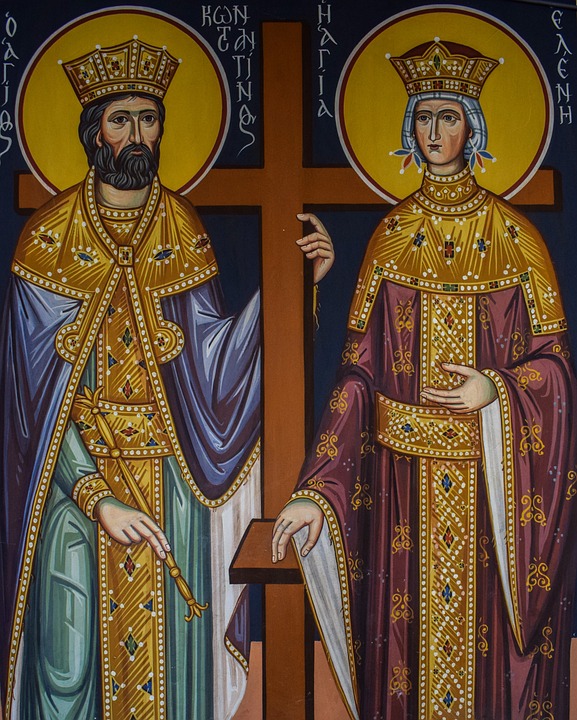
Saint Andrew the Apostle
Apostolic Succession, in Orthodox Christianity is based on bishops whose office descended from the uninterrupted line of continuity from the first Apostles of Jesus Christ.
Christian doctrine asserts that the chosen successors enjoyed through God's Grace the same authority conferred upon the Apostles by Jesus Christ.
Orthodox tradition states that the Apostolic Successor to Saint Andrew is the Patriarch of Constantinople.
Saint Andrew founded and ordained Stachys (Στάχυς: 2 AD - 54 AD) as the first bishop of Byzantium (38 AD to 54 AD), that established an unbroken line of 270 Patriarchs down to the present day Patriarch Bartholomeos I.
Byzantium became famous as Constantinople, the spiritual center of the Orthodox, Eastern form of Christianity and capital of the Byzantine Empire.
Saint Andrew the Apostle
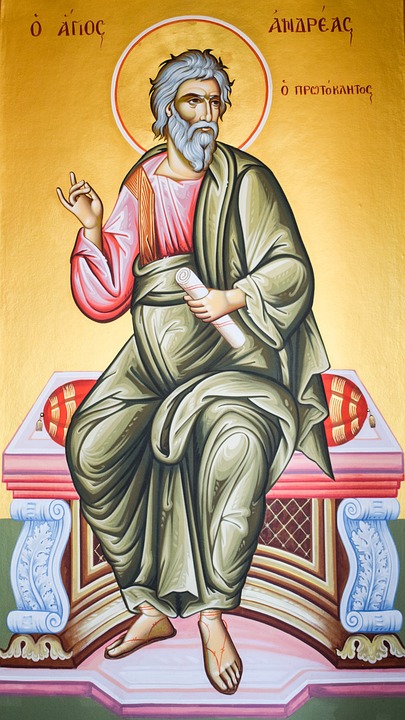
Saint Andrew the Apostle became one of the greatest missionaries and is credited with having converted countless thousands to Christianity and setting up churches throughout Asia Minor and Greece.
Saint Stachys was one of the seventy Apostles of Christ who accompanied Saint Andrew on his preaching the Gospel throughout the Greek-speaking centers of the eastern Roman Empire.
Saint Paul, Apostle to the Gentiles, in Romans 16:9 referred to Saint Stachys as ‘my beloved’ (τὸν ἀγαπητόν μου).
Six members of the 70 Disciples who assisted and were ordained by Saint Andrew were:
Saint Stachys was ordained as the first bishop of Byzantium, Asia Minor.
Saint Amplias was ordained the bishop of Odessa.
Saint Urbanus was ordained the bishop of Macedonia.
Saint Apellas of Heraklion, Crete (Greek: Ἀπελλῆς) who is numbered among the Seventy Disciples, was the first bishop of Smyrna, Asia Minor.
Saint Narcissus was ordained the bishop of Athens by the Apostle Phillip.
Saint Aristobulus, a Cypriot Greek and his brother, the Apostle Barnabas who accompanied Saint Paul on his missionary journeys, became the first bishop of Britain.
Martyrdom
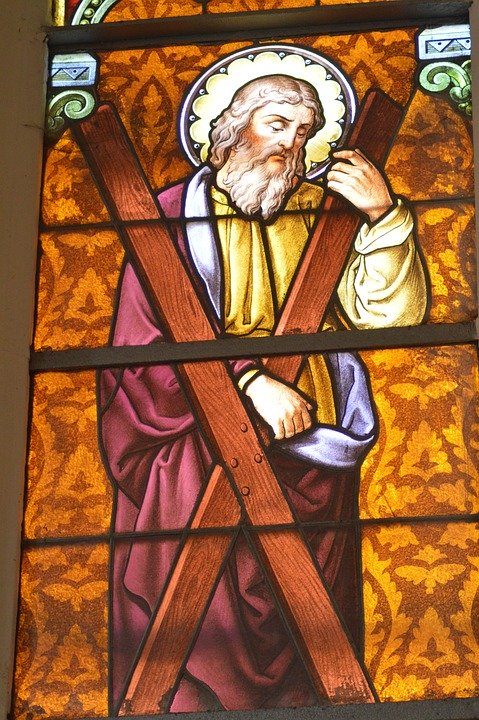
For the first 280 years, Christianity was banned by the Roman Empire.
The early Christian Church was established after much suffering and martyrdom because many Christians were beaten, stoned to death, thrown to the lions, tortured and crucified.
It was at Achaia, in the Greek city of Patras that was under Roman occupation, where Saint Andrew suffered death for preaching the Gospel of Jesus Christ.
Roman authorities were trying to stamp out the new religion and Aigeates, the Roman governor of Patras, was enraged because Saint Andrew converted his wife, Maximilla, to Christianity.
Saint Andrew was eighty years old when he was bound and crucified upside down to an X-shaped Cross because he believed that he was not worthy to die on an upright Cross similar to his Master.
After three days of agony, the great fisherman had cast his net for Jesus Christ for the last time.
Relics of Saint Andrew
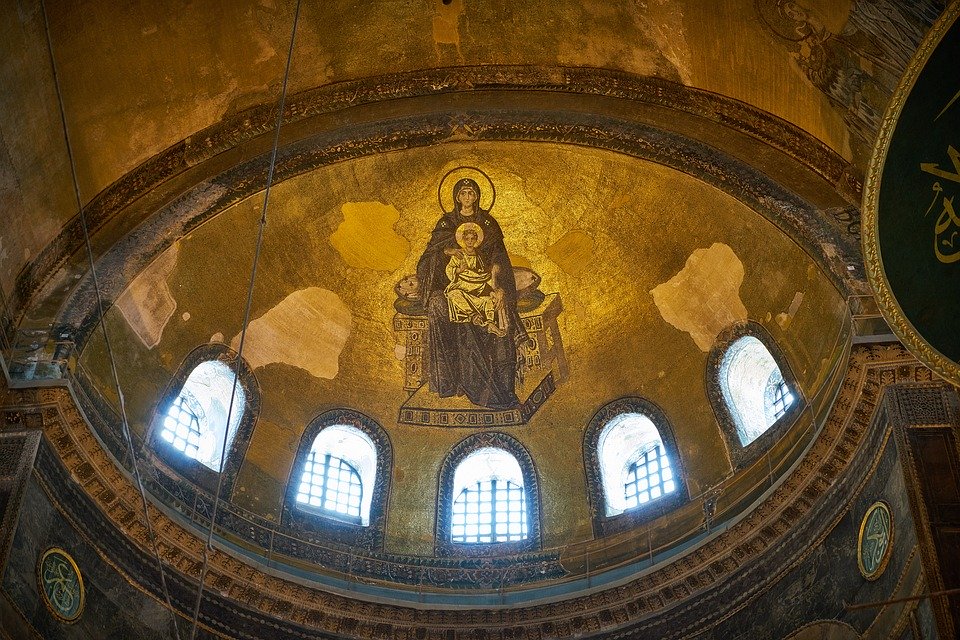
Two hundred years later, Saint Andrew's remains were brought to Constantinople (Byzantium).
In 1460, the relic of Saint Andrew's head was given to Pope Pius II (18 October 1405 – 14 August 1464).
Five hundred years later, on September 24, 1964, in an ecumenical gesture, the relic of Saint Andrew's head was returned to Greece by Pope Paul VI as a gift to the church of Saint Andrew in Patras and as a sign of friendship with the Greek Orthodox Church.
The Cross of Saint Andrew had also been taken from Greece during the Crusades by the Duke of Burgundy and kept in the church of St. Victor in Marseilles until it was returned to Patras on 19 January 1980 and presented to the Bishop of Patras Nicodemus by a Catholic delegation led by Cardinal Roger Etchegaray.
The relics of Saint Andrew which consist of the small finger, the top of the cranium and the Cross on which he was martyred, are enshrined in the Cathedral of Saint Andrew at Patras and are revered in a special ceremony, on his Feast Day, every November 30.
In Greece, Name Day celebrations for those named Andrew are celebrated with deep-fried loukoumathes.
Saint Andrew is a Patron Saint of Greece, Scotland and Russia.
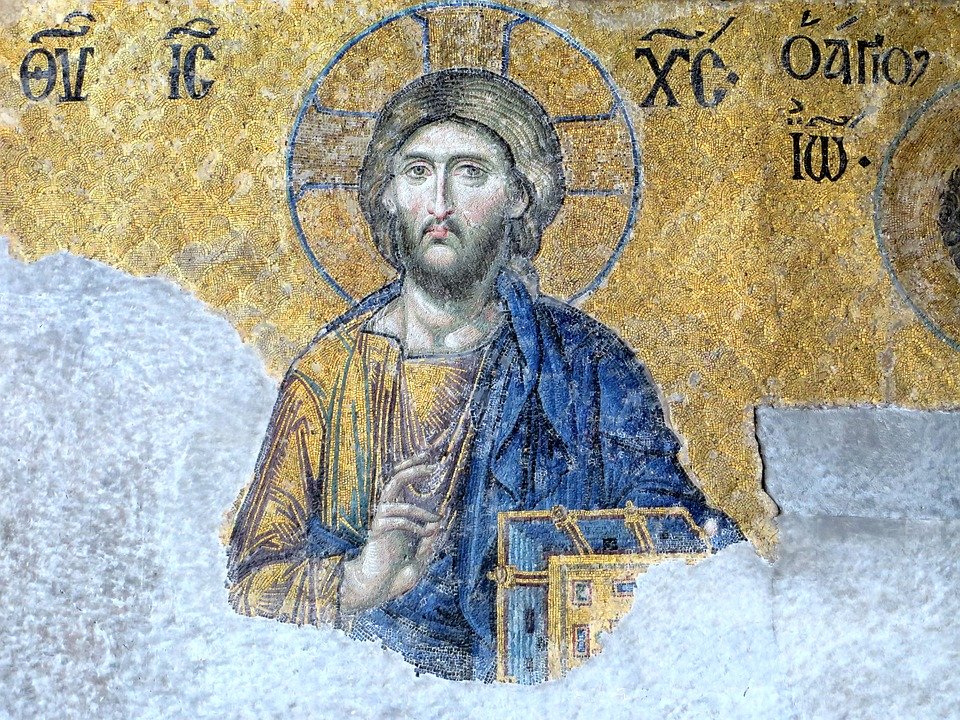
Ezine Articles Author Link
Click on the Link Below

Newsletter Opt-in-Form
The Keen Traveler
Your second block of text...
Recent Articles
-
When all we Have is God
Dec 20, 25 04:21 AM
When all we have is God in times of loss hardship or loneliness God's Presence offers refuge, strength and a purpose for the future. -
Beauty of Christmas
Dec 11, 25 04:22 AM
The beauty of Christmas is the celebration of the real Christmas Story with the Birth of Jesus Christ, the Son of God, Who came to bring love, hope, and salvation to the world. -
Spiritual Treasures of Life
Nov 26, 25 04:44 AM
Spiritual treasures of life are internal riches that are more valuable and everlasting than material wealth.


